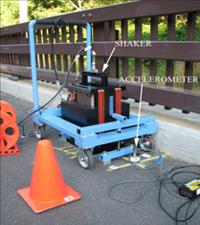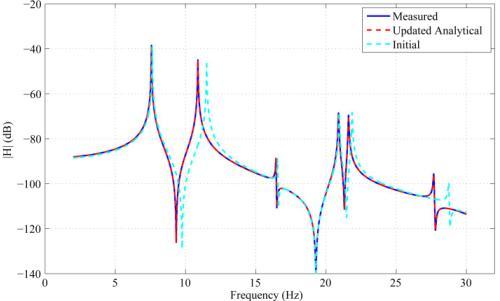Finite Element Model Updating Using Frequency Response Function

Figure 1: Shaker and accelerometer setup from July 2010 VAB Load Test
One method of dynamic based finite element model updating uses frequency response functions obtained from a dynamic load test and compares them with frequency response functions obtained from a finite element model. The measured frequency response functions for the Vernon Avenue Bridge were obtained using an array of 9 accelerometers to measure response and a shaker to excite the bridge. Frequency response functions are ratios of input/output data in frequency domain, typically acceleration data, which in turn provide full characterization of the linear system that is the bridge. The frequency response functions obtained from the finite element model are created using either full system mass, damping, and stiffness matrices or may be accurately approximated using mode shapes obtained from the finite element model. The goal of this research is to perform model calibration on a full scale bridge by updating a model to closely match on-site conditions. Researchers hope to do this by creating an automated process to update the finite element model as parameter estimation is being performed.
Figure 2: Transfer function
